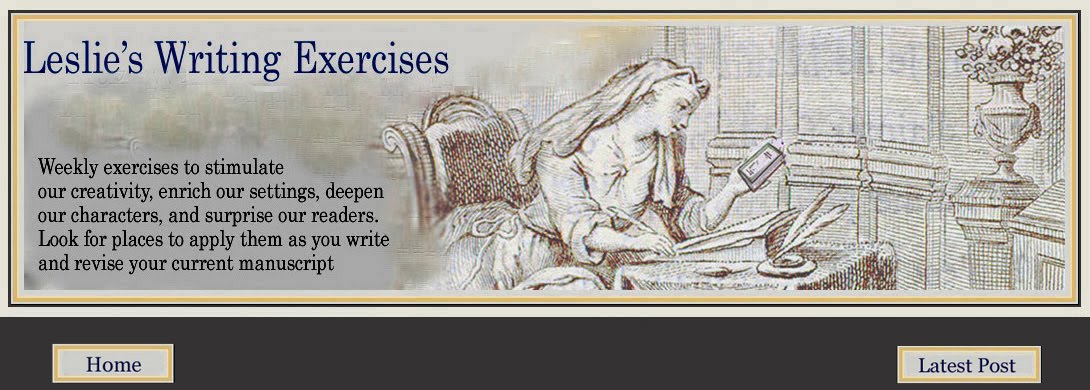When describing setting, all these old bits of advice keep bouncing around inside my head: Don't put your reader to sleep! Keep descriptions to a minimum; break them up. Readers these days don't want long, boring, set-piece descriptions of place. They'll refuse to read them and instead just skip ahead to the next action passage. Or worse, they'll put down your novel altogether. Horrors!
But that's not to say as writers we should limit ourselves to a few short lines of description once every page or two. A well-written passage of description can create a mood, or charge a story with emotion. Good description can move the story forward, delineate character, foreshadow action, heighten tension, and so on. "Description in a good novel," says David Lodge, "is never just description."
One way we can keep from boring the reader is to bring our settings to life through action. Author, David Galef (director of creative writing at Montclair State University), has written a wonderful little article on the topic for his monthly "Fiction Workshop" column for "The Writer" magazine online. In his article, "Move it: How to activate your setting" (Oct. 5, 2011), Galef teaches us to give our description a more "kinetic feel" by personifying our settings and using strong verbs. He shows how this is possible even for the most inert of objects. Your writing desk, for instance.
For this week's exercise I'm shamelessly stealing David's (from his column) but before you tackle it, I recommend reading his entire article (available here). To access it you'll need to register, but it takes less than a minute and then you'll have access to all of David's articles and all the other good stuff "The Writer" online has to offer.
David Galef: "The Fiction Workshop" for "The Writer" online: "Move it: How to activate your setting"
David Lodge: The Art of Fiction


